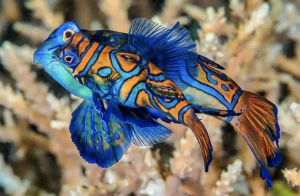How Marine Life Camouflages Itself in the Ocean
In the ocean, where everyone can be a predator or prey, survival depends not only on strength, but also on the ability to remain unnoticed. Many sea creatures, especially fish, have developed amazing ways of camouflage. Some of them are so skillful at adapting to their environment that they become virtually invisible – they can be called true chameleons of the underwater world.
Some of the most famous “chameleon fish” are seahorses and needlefish, which not only repeat the shape of the algae in which they hide, but can also change color depending on the background. This process, called the chromatophore reaction, occurs thanks to special cells in the skin that stretch or contract, changing the color of the body. This ability helps them avoid predators and sneak up on prey unnoticed.
Another master of camouflage is the flounder. This flat fish can not only change color, but also precisely adjust the texture of its skin to the seabed. It lies on the sand or ground and becomes almost indistinguishable from its surroundings. This strategy allows it to both remain safe and unexpectedly attack small fish swimming by.
Some fish use not only visual but also behavioral camouflage. For example, the leaf fish, which lives in tropical seas, looks like a piece of seaweed, slowly swaying in the water. Its body is flattened, and its fins move in such a way as to create the effect of drifting. This trick allows it to remain unnoticed by predators and at the same time get close to prey.
Camouflage in marine life performs various functions: protection from enemies, deception of relatives, attraction of prey. Some fish, for example, the scorpion fish, use bright coloring as a warning signal – this is how they tell predators that they are poisonous. Others, on the contrary, blend into the background in order to hunt unnoticed.
However, camouflage is not only a matter of survival for an individual, but also an important element of the ecosystem. These adaptations help maintain a balance between predators and prey in the ocean, and develop a complex web of interactions between species. By studying these mechanisms, scientists not only gain a better understanding of evolution, but also draw inspiration for new technologies, from camouflage to adaptive materials.
Chameleon fish remind us of how amazing and diverse life in the ocean is. Their ability to adapt to their environment is the result of millions of years of evolution, and each new discovery in this area helps us better understand the laws of nature. A careful look underwater can reveal a whole world of deception, cunning, and beauty, where every color and turn of the body is part of the great game of survival.
